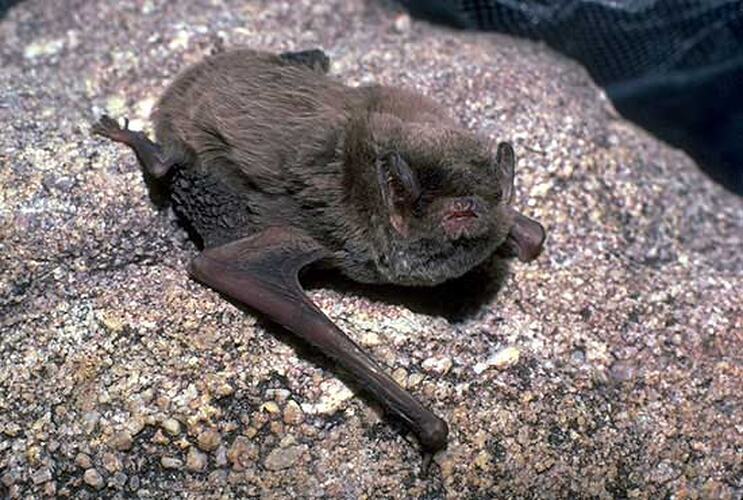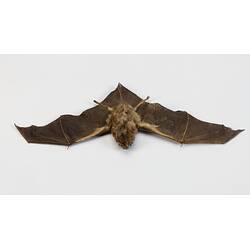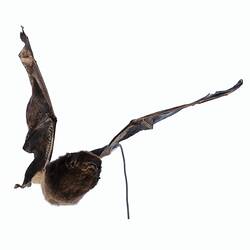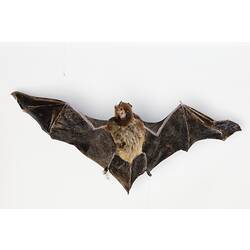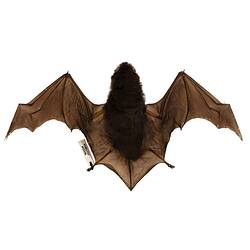General Description
Chocolate brown fur on back, paler brown fur on belly. Short snout and domed head. Wing membranes attached to ankles. In all Miniopterus species, the last finger bone of the third digit (the longest one), is greatly elongated, making the wing look 'bent' when resting. In all Miniopterus orianae species the forearm is greater than 43 mm. Wingspan 30-35 cm, body length to 63 mm.
Biology
This Bent-winged Bat forms extremely large maternity roosts of up to 100,000 bats in caves and man-made structures where young are born during the spring and summer months. During the rest of the year the bats disperse up to 300 km from the maternity caves. They forage above forest canopies, along forest clearings and waterways, feeding on insects (mainly moths). In Victoria the subspecies Miniopterus orianae oceanensis, the Large Bent-winged Bat, is Critically Endangered.
Distribution
East and north-west coasts of Australia.
Habitat
Occupies a range of habitats, particularly wet and dry forests and woodlands.
More Information
-
Animal Type
-
Animal SubType
-
Brief Id
Bat with brown fur, paler underneath and elongated third digit on wing giving its wing a bent appearance.
-
Colours
Brown
-
Maximum Size
63 mm
-
Habitats
-
Diet
Insectivore
-
Diet Categories
Insects, Moths
-
Endemicity
-
Commercial
No
-
Conservation Statuses
CITES: Not listed, FFG Threatened List: Critically Endangered, EPBC Act 1999: Not listed, IUCN Red List: Vulnerable
-
Taxon Name
-
Common Name
Australian Long-fingered Bat
-
Other Names
Australian Bent-wing Bat
-
Kingdom
-
Phylum
-
Subphylum
-
Class
-
Superorder
-
Order
-
Suborder
-
Superfamily
-
Family
-
Genus
-
Species Name
orianae
